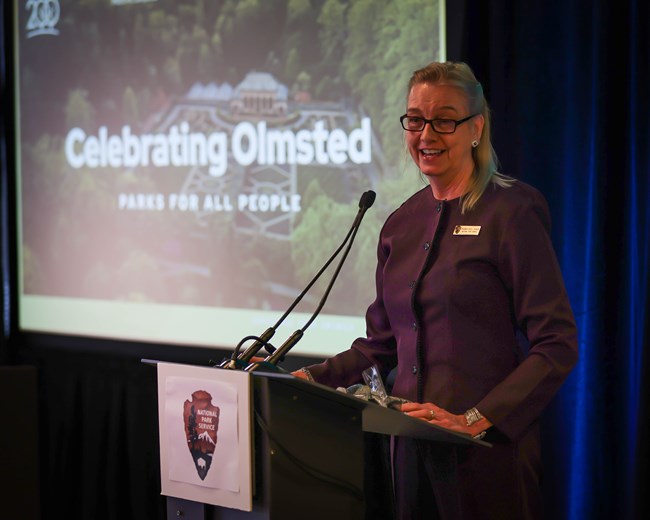Part of a series of articles titled Olmsteds: Landscapes and Legacies.
Article
Incorporating Contemporary Accessibility Features into a Historic Landscape
- Duration:
- 52.553 seconds
Incorporating Contemporary Accessibility Features into a Historic Landscape
Abstract
This presentation will provide an overview of the planning, designing, compliance, construction, and current use of an accessible trail that meets the laws and standards of the Americans with Disabilities Act (ADA) and the Architectural Barriers Act (ABA) while preserving the historic cultural landscape of the formal allée as designed by Frederick Olmsted Jr. for Lincoln Boyhood National Memorial in 1927 when the area was managed by the Indiana Lincoln Union.
The presentation will include an introduction to the Olmsted design objectives for a park promenade, contemporary challenges for accessibility, and design solutions reached through the collaborative teamwork of National Park Service colleagues, historic architects and landscape architects, compliance specialists, accessibility advocates, project managers and contractors.
The resulting rehabilitated trail and additional spur trails provide an equal park experience to visitors regardless of abilities, disabilities, and preferences, true to the Olmsted fundamental, “Parks for all people.”
Included in the presentation will be an introduction to the principles of Universal Design, the role of National Park Service accessibility guidelines, and the NPS “All In” initiative that enables and empowers a positive experience for all visitors by implementing physical and programmatic accessibility features which increases the satisfactory park experience by all visitors.
The program will highlight how an ongoing Self Evaluation Transition Plan (SEPT) is being currently developed to assist park managers, project managers and funding managers with both short-term goals and a long-range vision for effective visitor service in a significant cultural landscape.
A historical and contemporary perspective will be provided with excerpts from Mr. Olmsted’s original narrative, historic and modern photos of construction, design models and drawing to bring to light the layers of planning, problem solving and decision-making through the decades.
Questions and answers will allow participants to connect the evolving accessibility story to their local circumstances and utilize the experience, research and lessons learned from the Lincoln Boyhood project to other successful renovation projects in historic landscapes.
Fundamental to the story and highlighted in the presentation is the significance of the “vista,’ and “sanctuary” and “contemplative experience” that Frederick Olmsted, Jr. emphasized in his design so that that visitors, past, present and future, experience the awe and wonder of being immersed in the environment that Abraham Lincoln experienced from age 7 to 21 and where he developed the tenets that guided him in his adult years as a national leader.
The trails are a beautiful addition to the park experience for pedestrians, runners, visitors with wheelchairs and walkers, and families with strollers and wagons to choose their preferred options between path or stairs, sun or shade, direct or indirect routes. The improved trails are welcoming for those who already love the park, and those new to the park, who explore the environment where a self-educated boy lived and worked for fourteen years among his family and friends in the Indiana woods.

Presenter Biography
Rhonda Buell Schier is superintendent of Lincoln Boyhood National Memorial. She has served at Mount Rushmore National Memorial, Independence National Historical Park, Valley Forge National Historical Park and Gateway Arch National Park. As the Arch Museum Director Rhonda coordinated a complex partnership project to design, fabricate and install accessible exhibits and media as part of a transformation of facilities and grounds, incorporating features of Universal Design to welcome all visitors. At Lincoln Boyhood she leads a trail renovation project while preserving the historical landscape. Rhonda also served as a classroom teacher, curriculum author, and professional development facilitator for adult learners.
Last updated: September 26, 2025
